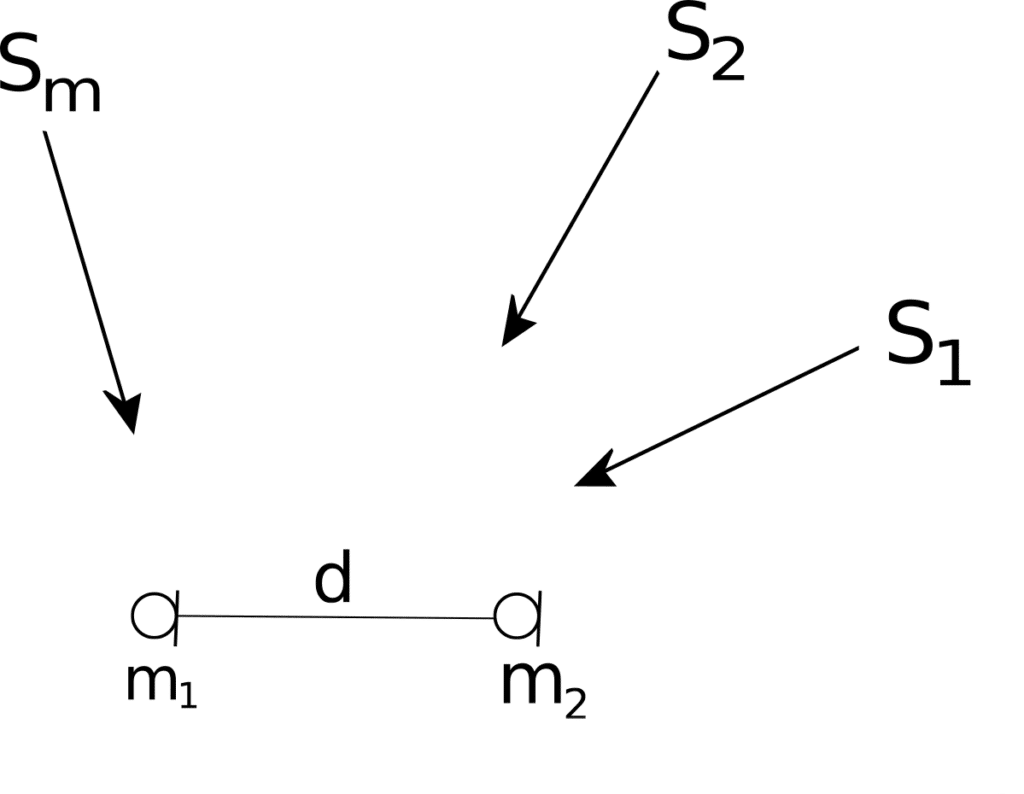Blind source separation for an under-determined system is particularly challenging because of the non linearity introduced by the masks used in the separation. An under-determined system means the number of observations is less than the number of desired signals. The problem becomes more challenging for wide band signals such as speech signals which are not totally separable. Techniques utilized in BSS of under-determined systems use clustering of a feature space to do the separation. Such techniques require at least two sensor measurements. Features such as direction of arrival and spectral sub-band energy levels are used to discriminate the desired signals. Perfect delineation is possible in an an-echoic chamber but difficult to achieve in reverberant environments.
Consider far field source impinging
microphones as shown in Figure 1:
Figure 1: m signals captured by 2 microphones
The received signals at each of the microphones can be characterized in the time-frequency domain as
where denotes the direction of arrival of the
signal. Under the assumption that the signals are sparse in frequency domain such that at any instant, only one source occupies a frequency bin, the above equation then reduces in time-frequency domain to
for some . Estimates of the
pair can be used to form
clusters which are then used as a mask for source separation.
As a custom design house, VOCAL Technologies offers custom designed solutions for blind signal separation with a robust voice activity detector, acoustic echo cancellation and noise suppression. Our custom implementations of such systems are meant to deliver optimum performance for your specific beamforming task. Contact us today to discuss your solution!
